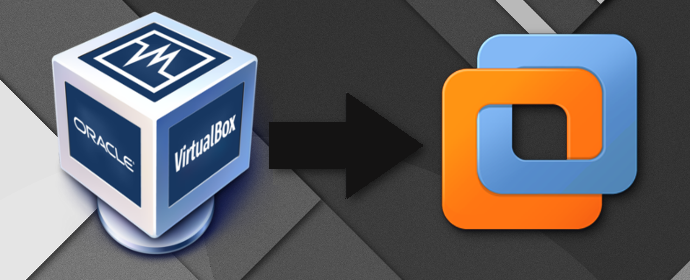In the first posts, I showed you how to install Ubuntu in VirtualBox. I did choose VirtualBox because the installation didn’t seem to work in VmWare Player (Another well know product for creating and running operating systems and applications in a virtual machine). Unfortunately, I also encountered some bugs in VirtualBox whenever I tried to enable 3D acceleration (screenshots were black, and Atom was not starting properly).
So after some search, I found out it’s actually quite easy to migrate a working image from VirtualBox to VMWare Player.
Exporting from VirtualBox
Start VirtualBox, go to the Menu and selected Export Appliance…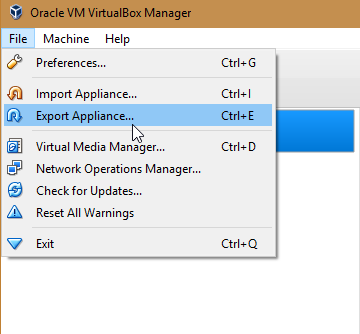
Simply follow the guide and keep the default values (double check where you want to export the file)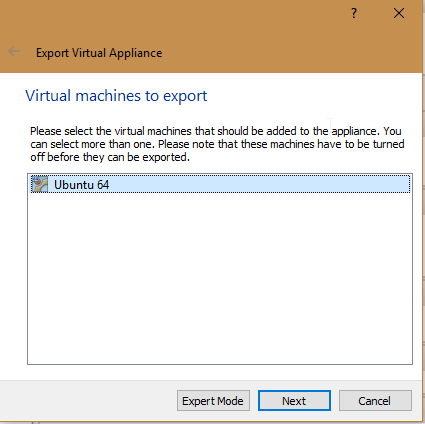
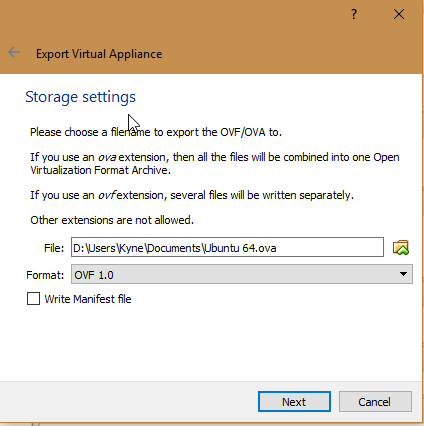
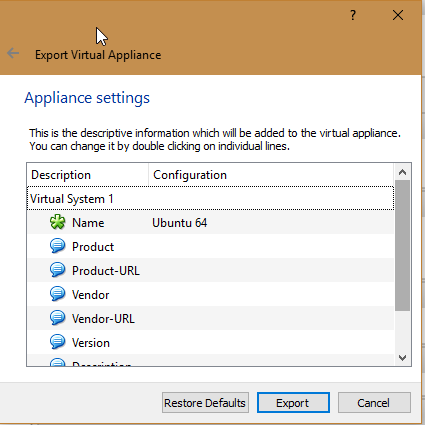
At the end, the export will start. Depending on the size of your image, it may takes some time…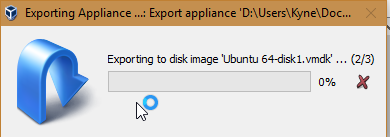
Importing into VmWare Player
Once the export has been successfully completed, it’s time to import it. You can close VirtualBox, and starts VMWare Player.
If you have not yet installed VmWare Player, you can download it here : https://my.vmware.com/web/vmware/free#desktop_end_user_computing/vmware_workstation_player/12_0
I don’t think VMWare exists on MacOSX, but as I said, you probably won’t need Ubuntu if you are on a
Mac.
Go to “Open a Virtual Machine” and browse to the exported .ova file
You’ll probbaly see a warning,
but you can ignore it safely, and hit “Retry”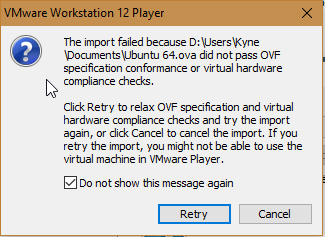
The import should start quickly… but once again, the whole
process will takes time.

Most tutorial will leave you here, with a working image. But even if it starts, it won’t run properly as you were used to.
Final Configuration
Edit the settings of the imported machine (you can safely delete the exported .ova) by right clicking on the image in the list.
- Double check the CPU and memory, to ensure the values were properly imported.
- Add a soundcard to the list (use the default values or pick one if you have multiple soundcards or output ports. In my case, I chose the optical output “SPDIF”)
- You can also enable 3D acceleration back, and increase the allowed memory to 2Gb (maybe more, maybe less, depending on your hardware) in the “Display” section.
- You should also probably add USB controller support, just in case you need to plug an external device.
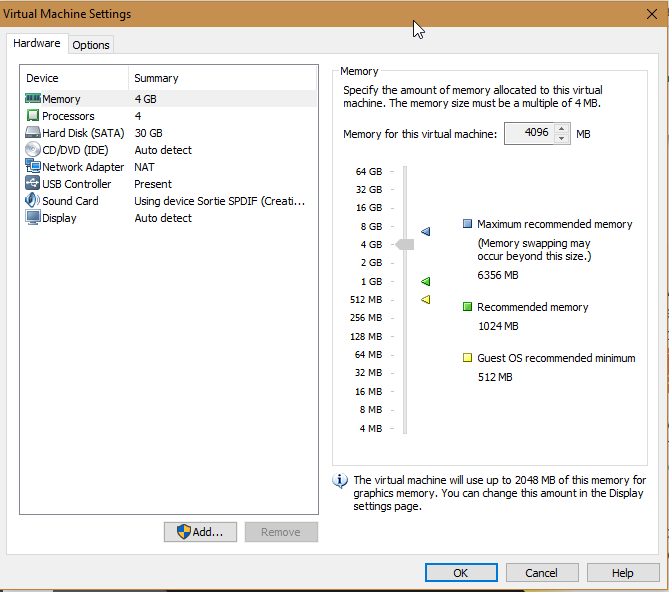
Switch to the other tab and add your shared folders.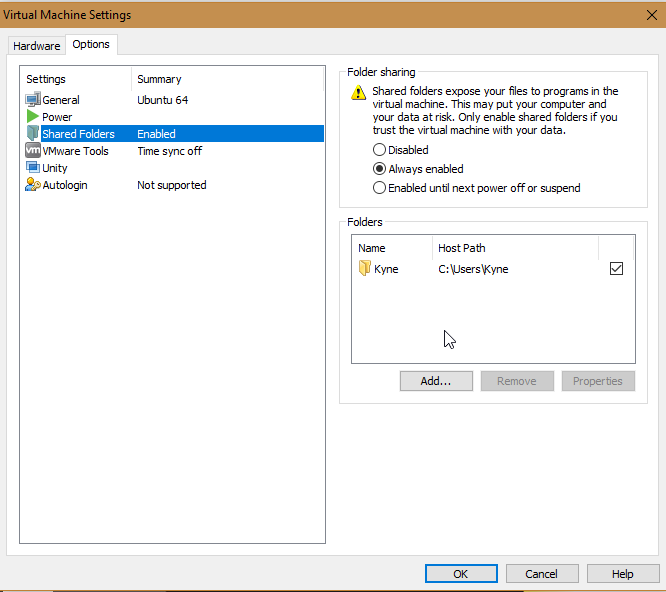
Starting the machine
You should now be able to start your Ubuntu machine. I a dialog appears, choose “I copied it”.
If everything went fine, you should have your environment back.
I recommend to install the VMWare tools from the VMWare
Menu (note that in my case, the option has switched to “Update”, because I already installed everything before).
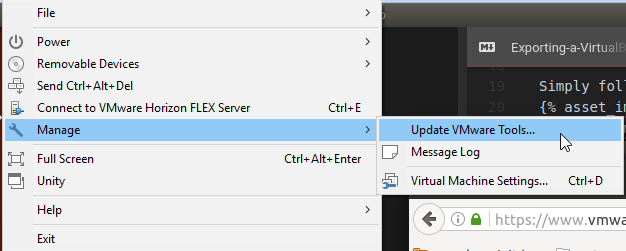
Ubuntu should automatically mount the tools CD-ROM. Copy the archive somewhere else on your desktop, and extract it (you can simply right click, you don’t need to use the terminal).
Finally, open the terminal, go to the extracted
folder and run the second command
You should keep the default answer to all questions. Note that the very first question will probably recommend you to use install from a package instead, but most tutorials are still using the old version, so I decided to do the same.
Once finished, you should probably restart Ubuntu.
Shared folders tweak
In my case, Shared folders didn’t work, even after a restart.
I had to run this command to reconfigure the VMWare Tools with the proper driver
Once done, simply go to /mnt/hgfs/ using the File Explorer, and you’ll find your shared folders.
You can them drag&drop the folder to the left menu, in order to create a shortcut.
Broken resolution?
In my case, my resolution (1920*1080) didn’t appear in Ubuntu, so I had to choose between a tiny window, or something too large.
I manually created a custom resolution, but I’m not sure this is the proper fix.
Anyway, if you encounter the same problem, you can run these commands.
first, use cvt, followed by the height, width and refresh rate.
Paste the value returned by the first command, starting after “Modline”
If Virtual1 is not your display name, simply type xrandr with no parameter to print your display name.
Your new resolution should now be applied, and listed in the “System Settings > Display” menu.
Conclusion
Congratulations, you now have another Ubuntu machine with proper 3D acceleration.
For now, everything seems to work as expected, but the boot is slower on my machine. I’ll continue investigating to see if it’s normal, or if I messed up
something in the configuration.
